#roman london
Text


Smith, Charles Roach, T. Richards, and M. E. Phillips. Illustrations of Roman London. London: Printed for subscribers, and not published, 1859. Print.
DA677.1 .S63 1859
#libraryofva#specialcollections#rarebooks#roman london#london#roman empire#mosaic#mosaic pavement#ancient rome#tiger#flowers
23 notes
·
View notes
Text
Our Favourite Objects From The Museum of London
Our Favourite Objects From The Museum of London
The Museum of London closes its doors this weekend, in preparation for the move to Smithfield where it will reopen as The London Museum. As London guides, the Footprints of London team have been inspired by the Museum of London over the years. We are all a little bit sad about the current site closing, even if we are excited about the possibilities of the new home for the Museum of London. With…

View On WordPress
0 notes
Text




Alternating between both Cassie personas🧚🏽♂️🐚🪷
#roman angel#skins#euphoria#vintage#y2k#2000s#90s aesthetic#london#lana del rey#colour grading#cinematographer#this is so me#this is what makes us girls#gaslight gatekeep girlboss#girl blogger#sydney sweeney#cassie euphoria#cassie skins#effy stonem#coqeutte#dollette#lana stan#pink aesthetic#mental health#diary#hell is a teenage girl#soft girl#pinkcore#hannah murray
56 notes
·
View notes
Text

2,000-Year-Old Roman Mausoleum Unearthed Near London Bridge
No burial artifacts were recovered from the structure itself, but the surrounding area yielded over 80 Roman burials containing copper bracelets, coins, glass beads and a bone comb.
A "completely unique," 2,000-year-old Roman mausoleum that has emerged from the rubble of a development site in central London is the most intact ever discovered in the U.K.
The monumental tomb — of which low walls, entrance steps and interior flooring remain — is bejeweled with two mosaics composed of small red tiles, each featuring a flower enclosed in concentric circles. More than 100 coins were also strewn across the tomb's floor.
Archeologists only found the second mosaic when they dug beneath the first one. This indicates the mausoleum floor was raised at least once while it was still being used for burials, they said.
The discovery, which is nestled within the city's central Southwark area, "provides a fascinating window into the living conditions and lifestyle in this part of the city in the Roman period," Antonietta Lerz, a senior archeologist at The Museum of London Archeology (MOLA), said in a statement.
Roman invaders under Emperor Claudius founded London, or Londinium, around 47 A.D. and ruled the city through to the early fifth century, when dwindling military resources and incursions across the rest of the empire forced their withdrawal from Britain.
The recent excavation bears the marks of this decline. "This relatively small site in Southwark is a microcosm for the changing fortunes of Roman London — from the early phase of the site where London expands and the area has lavishly decorated Roman buildings, all the way through to the later Roman period when the settlement shrinks and it becomes a more quiet space where people remember their dead," Lerz said.
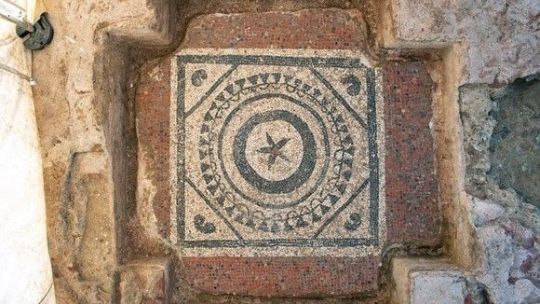

The mausoleum would have originally housed coffins and other burial artifacts, according to the statement, but none were recovered from the structure itself. However, the excavation site around the monument yielded Roman-era items belonging to more than 80 burials, including copper bracelets, glass beads, pottery and a bone comb.
Archeologists will now examine these recovered items to better understand central London's Roman past.
Only the wealthier members of society would have had access to the mausoleum, which may have been used as a family tomb or belonged to a "burial club," requiring a monthly fee to secure a future grave, according to the statement.


What remains of the structure indicates that it was a two-story building with large buttresses in the corners for support. The high walls were probably dismantled for reuse elsewhere during the medieval period. Inside, a raised platform cemented with pink mortar containing crushed bits of pottery and brick — a widely used Roman building material known as "opus signinum" — designates where the burials would have taken place around three sides of the mausoleum.
The discovery follows that of a 26 foot (eight meter) long Roman mosaic — the largest unearthed in London for more than 50 years — in February 2022. The newly excavated mausoleum will be put on public display once construction has concluded, according to the statement.
By Sascha Pare.


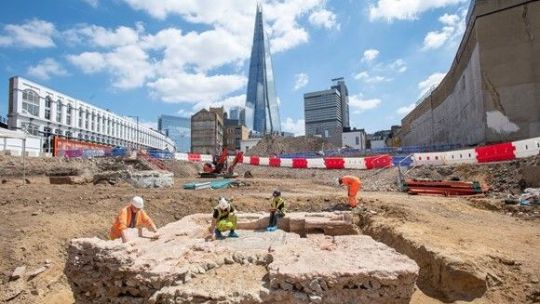
#2000-Year-Old Roman Mausoleum Unearthed Near London Bridge#roman mosaic#ancient grave#ancient tomb#ancient mausoleum#ancient artifacts#archeology#archeolgst#history#history news#ancient history#ancient culture#ancient civilizations#roman history#roman empire
327 notes
·
View notes
Text
I've never actually been to Rome. My father has, though, when he was...eight? My grandfather was a devout Catholic, and wanted his family to see the Pope. My grandmother was not a devout Catholic, only a devout auditor, and in the middle of St. Peter's Basilica started asking pointed questions about the Catholic church's finances, while my grandfather begged her to please wait till they were off consecrated ground.
At some point, they realized their son was missing.
Catholic sermons are not very interesting for eight-year-olds, so my father had wandered off and hopped on a tour bus. He ended up in Pompeii and it was "pretty cool," before the tour group realized they'd acquired an extra child.
#fortunately it's not hard to locate a giant basilica and a panicking lebanese couple#he still does this. last time he drove from london to scotland without a map to 'check out a radio'#'it's not hard. you just keep going north'#about jlrrt#jlrrt speaks#just roman memes
51 notes
·
View notes
Text
I NEED TO FIND THAT SECRET LOCATION NOW


@jazzy-tzw @jeysuso
#im gonna end up jumping from the london bridge and still suffering for this family#roman reigns#the bloodline#the usos#jey uso#jimmy uso#wwe#wwe mitb
96 notes
·
View notes
Text

Iron Sword with Bronze Fittings from Dorset, England dated to the 1st Century CE on display at the British Museum in London, England
This large straight bladed Roman sword has Celtic style decorations on the hilt fittings. The Roman garrison at Hod Hill in Dorset included detachments of both auxiliary cavalry and legionaries. The sword may have belonged to a soldier of either unit, though its size is perhaps better adapted to use by a cavalry trooper. A metallographic examination reveally no evidence for hardening of the cutting edges.
Photographs taken by myself 2016
#sword#ancient#roman empire#archaeology#art#military history#iron age#england#english#british museum#london#barbucomedie
84 notes
·
View notes
Text
the second part of "is it true" is just eurydice realising she married a union man and that she is incredibly into that actually
#hadestown#finally saw it in london last night and i WILL now be hadestown posting for the foreseeable future#dónal finn as orpheus is my roman empire now#dónal finn
19 notes
·
View notes
Text
Archaeologists have made groundbreaking Saxon findings beneath the National Gallery, London! Their recent excavations of Jubilee Walk reveal that Saxon 'London', known as Lundenwic, extended further west than we ever knew. They have found evidence of ancient structures and artifacts dating back to 659-774 AD, expanding our understanding of London's rich past.
21 notes
·
View notes
Text

May 29, 1976 - Brian May and Chrissie Mullen's wedding at St. Osmund`s Roman Catholic Church in Barnes.
Found via pinterest.
#Brian May#Chrissie Mullen#Chrissie May#muse#1976#1970s#1976 chrissie#1970s chrissie#St. Osmund`s Roman Catholic Church#barnes#richmond#richmond upon thames#london#chrissie mullen may
20 notes
·
View notes
Photo


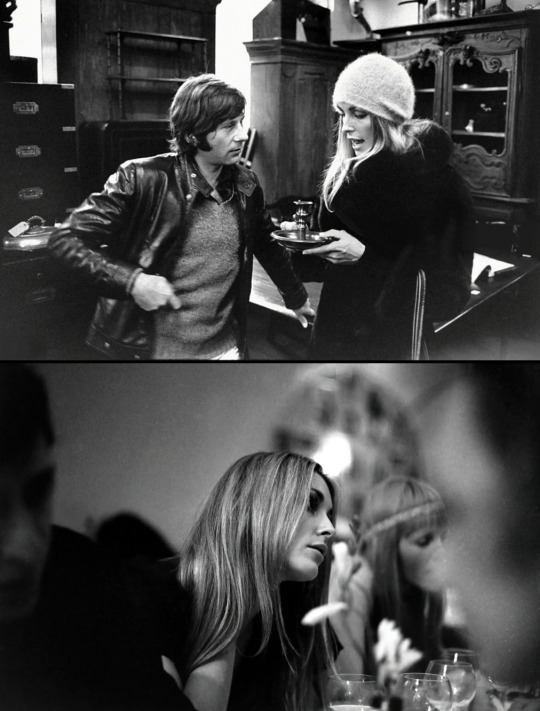

“I thought she was a dream. Really, just wonderful. In fact, years later, that whole time spent with her and Roman sort of feels like a dream sequence from a movie—Sharon was always beautiful, and she was never fussy. She didn't care what angle I was shooting from, never demanded that I get this side or that side of her. Ingrid Bergman, when I photographed her around that same time, had a similar ease about her. She and Sharon had this incredible, natural beauty, and they didn't worry about the wind blowing their hair around or looking less than perfect. And that, of course, just made them that much more appealing"
Bill Ray
Photojournalist for LIFE Magazine who passed away in 2020 at age 83
75 notes
·
View notes
Text





Doll🪩☔️🦋
#roman angel#y2k#90s aesthetic#london#black girl mood board#vintage#2000s#bratz doll#bratz aesthetic#doll#lana del rey#pinkcore
31 notes
·
View notes
Text
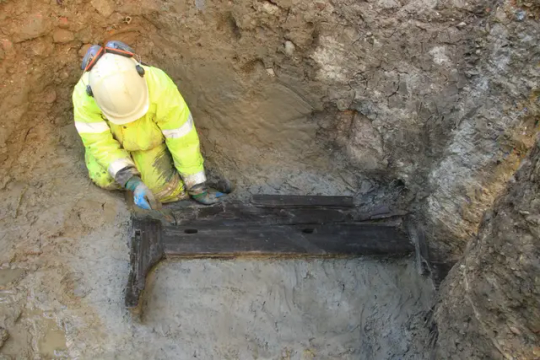
A Rare 2,000-Year-Old Roman Funerary Bed Discovered in London
Archaeologists working in central London have discovered a burial site containing a wooden bed used in a Roman funeral.
A team from Museum of London Archaeology (MOLA) made the find near Holborn Viaduct, in the heart of central London, six meters (20 feet) below modern street level.
Depictions of beds being used as part of funerals are common in Roman art. However, the bed found at this site, preserved by the damp mud of the underground River Fleet, is the first complete example ever discovered in Britain.
Made from high-quality oak, the bed has carved feet, and joints fixed with small wooden pegs. Reminiscent of modern-day flatpack furniture, it was taken apart before being placed within the grave.


In a statement, Heather Knight, project officer at MOLA, said, the level of preservation of the wooden finds “has really blown us away.”
Michael Marshall, a MOLA finds specialist, said that “Roman wooden furniture only survives under exceptional circumstances” and that the bed is unique “in being dismantled and placed in the ground complete.”
These Roman finds are just the latest layer to be revealed in the site’s slice through London’s history. According to MOLA, their excavations have also revealed there was another cemetery on the site during the 16th century.
After the devastation of the Great Fire of London in 1666, the site saw new life, with the construction of houses, shops, and a pub, which were eventually replaced by Victorian warehouses.
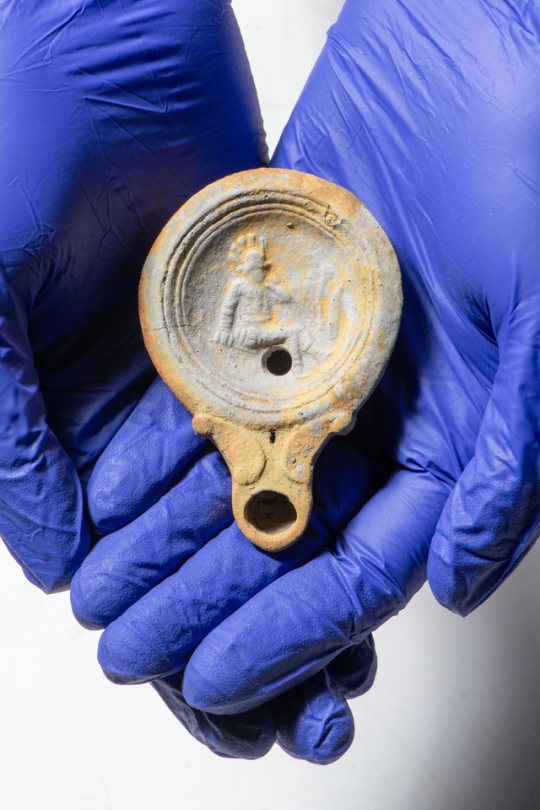
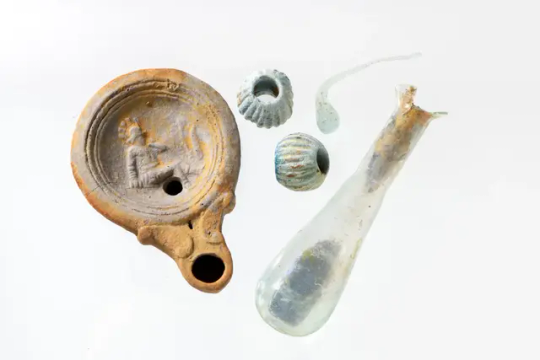
In its latest chapter, the site is being transformed into office space for global law firm Hogan Lovells, which intends to display some of the archaeological finds.
Alongside skeletal remains, the archaeologists also dug up personal objects in the Roman site, such as beads, a glass vial and a decorated lamp.
Marshall said the discovery of such artifacts in the final resting place of some of Roman London’s first residents allows archaeologists to further “explore how furniture might have played a role” in Roman funerals and “shines a new light” on such rituals.
The latest finds follow the discovery last year of an “incredibly rare” Roman mausoleum beneath a construction site in south London, close to the Thames River’s south bank.
By Caolán Magee.
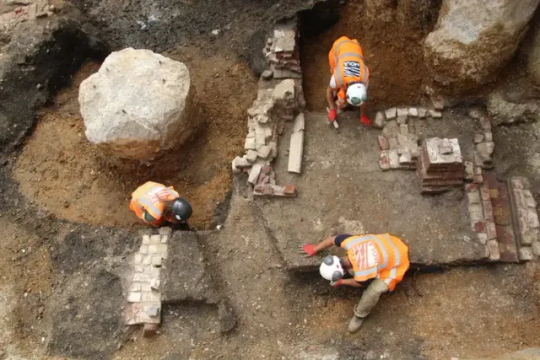

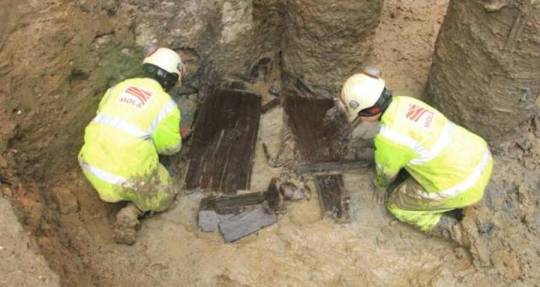
#A Rare 2000-Year-Old Roman Funerary Bed Discovered in London#London#Museum of London Archaeology#ancient grave#ancient tomb#ancient artifacts#archeology#archeolgst#history#history news#ancient history#ancient culture#ancient civilizations#roman history#roman empire
42 notes
·
View notes
Text
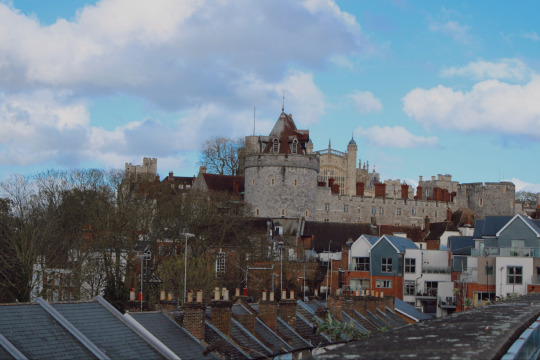
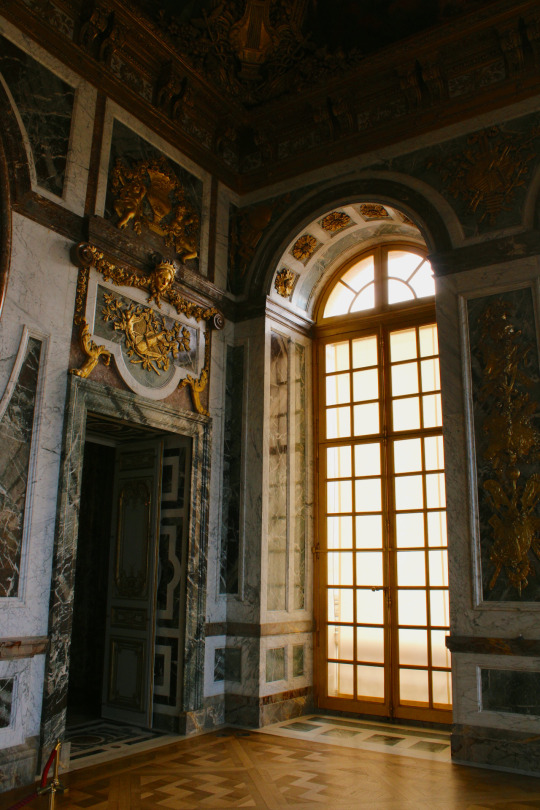
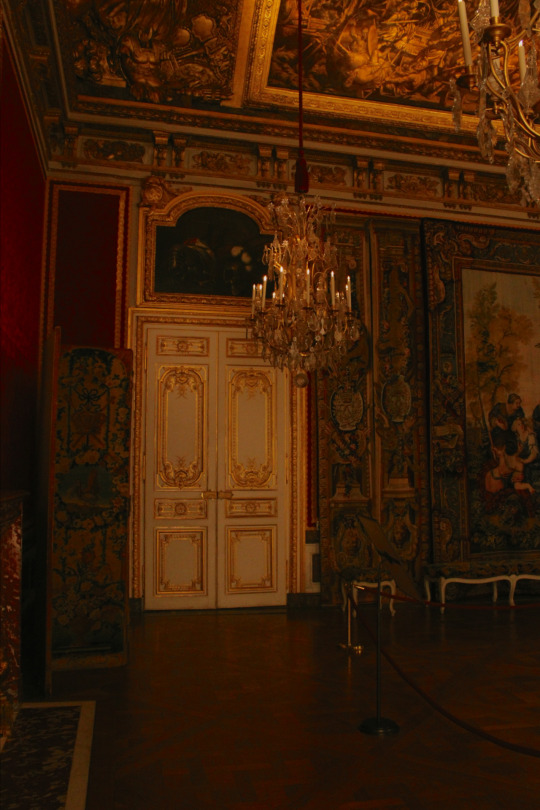
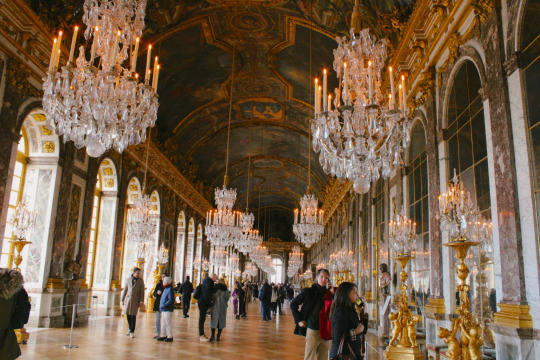
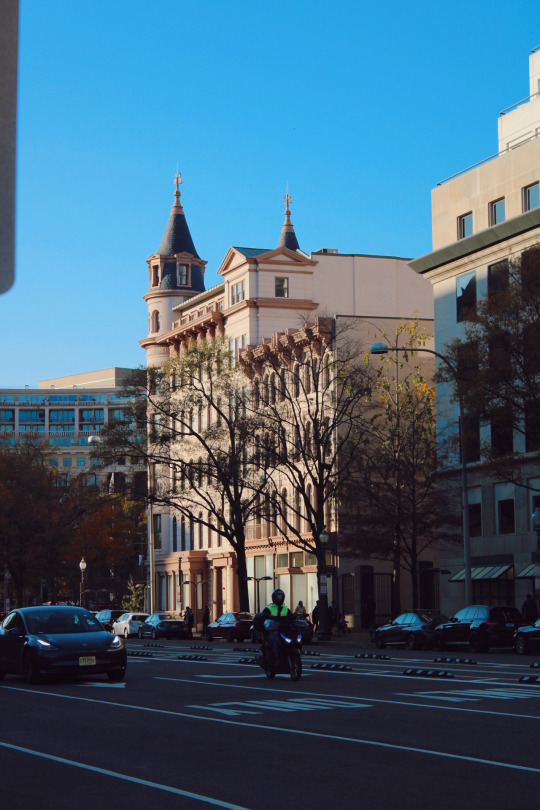


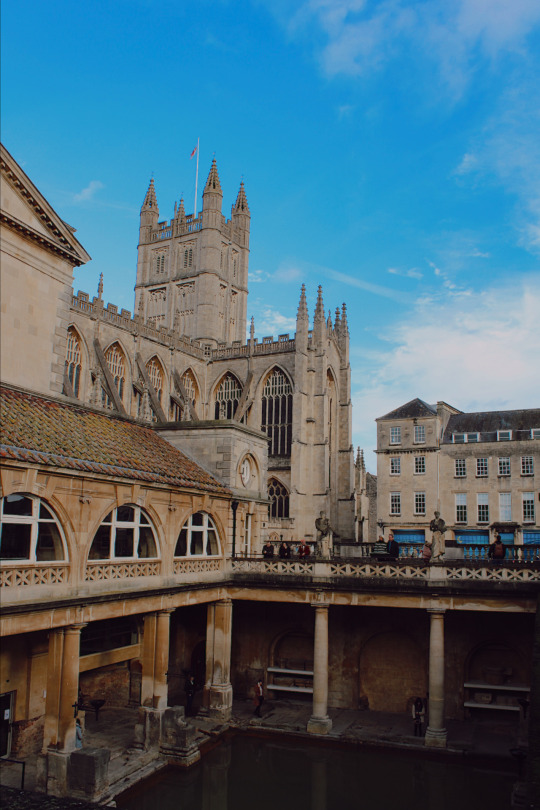

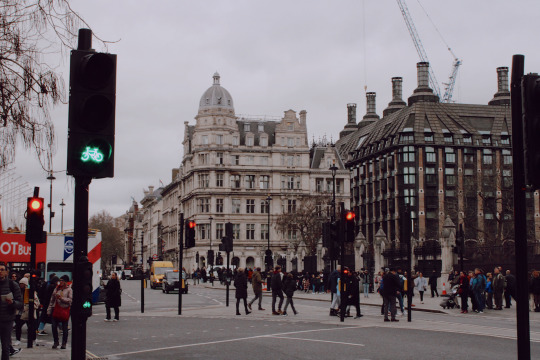
#architecture#original photographers#photographers on tumblr#photography#roman baths#london#washington dc#palace of versailles#original art#saint paul’s cathedral#nature#street life#cityscape#girl blogger
15 notes
·
View notes
Photo

Giles Gilbert Scott and J. Theo Halliday, Battersea Power Station, London, UK, 1929 -1955 (redevelopment by WilkinsonEyre) ph. Peter Landers
VS
Tomb of the Horatii and Curiatii, Albano Laziale, Italy, 1st century BC
#via appia antica#via appia#archaeology#ancient rome#rome#roma#roman empire#roman republic#Horatii And Curiatii#albani laziale#tomb#Mausoleum#london#thames#Giles Gilbert Scott#Battersea Power Station#architecture#archdaily#archidaily#archiporn#archilovers#WilkinsonEyre
57 notes
·
View notes